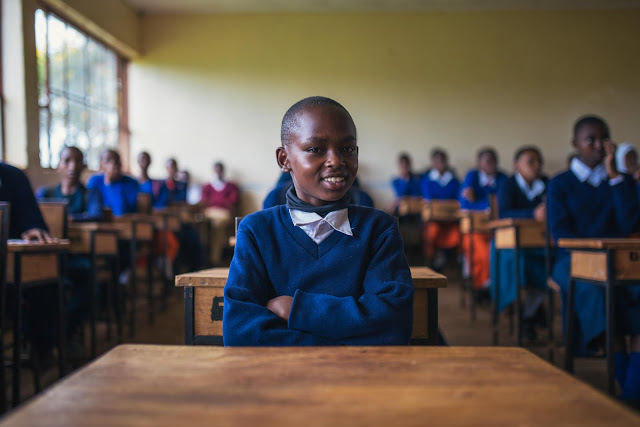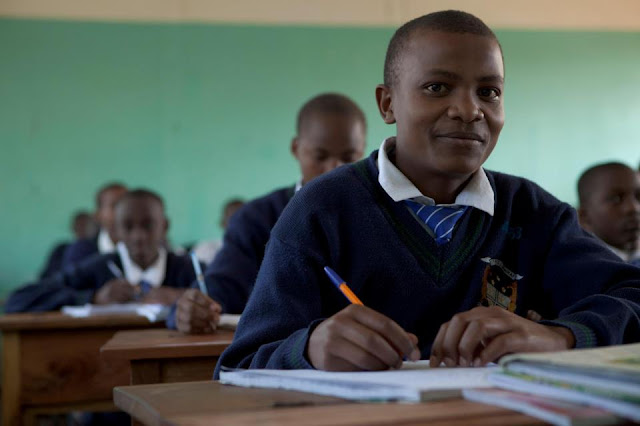A few weeks ago, I found myself in the outskirts of Nairobi, Kenya, in Kibera and Mathare, Africa's largest slums and home to some young men and women whose world is riddled with painfully common gang and sexual violence. It's a constant struggle to access clean water, find toilets. Their families live on next to nothing, but if a student here wants to go to secondary school, the government requires they pay school fees.

Public secondary school is not free in Kenya, like in many other developing countries, and the inability to pay school fees is a major contributing factor to the 62 million young people globally who are out of school. Who can afford a couple hundred extra dollars a year for school fees when you can barely manage to eat?
I met too many young people whose had to make this difficult choice between bread and books. But I also saw a familiar fire in the eyes of the young people I met who nevertheless were fighting to pursue an education.

I was once a teacher in a charter school in New Orleans. My students faced poverty, came from neighborhoods where a good education was not guaranteed, but I worked with them to succeed. They defied their own expectations. I've never believed any child is a lost cause, but those years teaching allowed me to see how some young people do lose their way. Often, I'd argue most of the time in the U.S., dropping out is a matter of growing up with few resources, too little opportunity and not having the good fortune to meet a person that insists upon believing in you. As a teacher, I learned to believe so hard in my students that they had no choice but to believe in themselves.
And then, in Kibera where dwellings are makeshift jumbles of scrap and wood, where kids grow up unsafe and undernourished, I also found that peculiar magic—young people finding reason to believe in their own futures. They were learning. They were growing. Despite far too many odds and an educational structure that is stacked against them, they were in school.
The young people I met attend Shining Hope For Communities (SHOFCO), which establishes schools for girls in the heart of these slums, then builds out concentric circles of services—food, healthcare, toilets and clean water, savings and loan groups, after-school programs—to draw in families and make educating their daughters central to helping stabilize their families. I met girls and boys whose families desperately guarded their chance to learn, and students who were able to go to these special schools, which are consistently in the top three in the nation, because outsiders insisted upon believing in their future.
I was there because the nonprofit I run, The School Fund, crowdfunds scholarships for SHOFCO's students. On our website, strangers abroad learn about these students and in increments of $10, $20, $50, they build them scholarships.

In my job, I get to watch scholarship funds fill up a few dollars at a time—and I'll watch them fill faster this upcoming June 22, our Match Day, when we double contributions made to our students. I spend many of my days reaching out to people and showing them how a relatively small sum can mean a year of school for an impoverished yet high-achieving student. But I also get to know these students and believe in them. I get to meet young girls raised in the world's largest and roughest slums who obsess over their science homework because they plan to be neurosurgeons, engineers, science teachers. I get to see young people transforming themselves, working hard at school every day, because they've been given an opportunity too precious to waste.
Someday, I hope school fees will be abolished at the secondary level as they have been in primary schools throughout the developing world, but for today, I use the tools we have to create opportunity for as many students as we can.

Liz Texeira has spent her professional life working in education domestically and abroad, and went to Harvard, on scholarship, for undergrad and also graduated with a Master's Degree in International Education Policy. She founded her own company, Girls Thinking Global, in the girls' empowerment space; is a Teach for America alum; and has worked as an Emergency Medical Technician and Education Specialist throughout Northern Africa and the Middle East. At The School Fund, Liz works to engage diverse audiences, donors, and partners to increase awareness of school fees and help those groups join forces to create scholarships for high-achieving but low-income students in the developing world.
PHOTOS:
Kibera photo credit: St. Aloysius Secondary School Journalism Club, with Creative Commons license.
All others courtesy of The School Fund.
